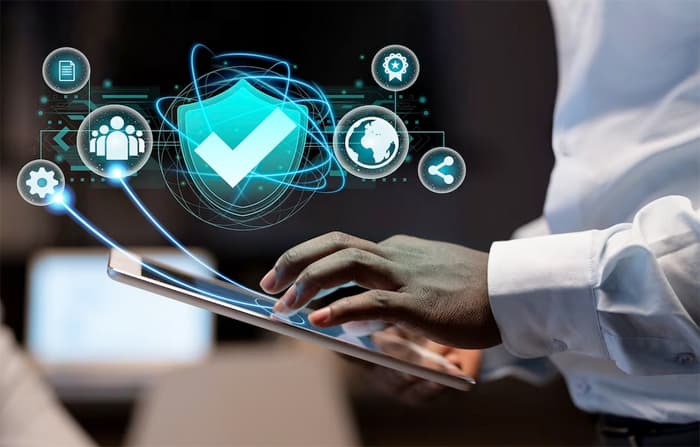
Malware 101: It’s easy to need clarification about what each of these terms means since there are so many threats on the internet. Some examples include adware, spyware, ransomware, malware, and viruses. This page will provide an overview of their differences. Along the way, I’ll clarify some misconceptions about malware. Finally, you’ll learn where these cybersecurity threats originate, how to avoid them, how to determine an infected device (Windows, Mac, and Mobile), and what to do if you consider your device infected.
What is Malware?
Malware is the short term for malicious software and refers to a software program created to inflict harm on the devices it attacks. Malware affects computers in many ways and takes many forms, such as spyware, trojans, and other viruses.
Cybercriminals develop Malware to access a device discreetly to infect sensitive data and the computer system. Cybercriminals have different goals when they’re implementing malware 101 attacks. Some want to steal confidential data, while others use this to profit from the targeted victims. Devices infected with Malware tend to run slower or get rebooted randomly. The computer will also start unknown processes. The 2023 Thales Data Threat Report reveals that:
48% of IT professionals have reported Ransomware attacks.
22% of organizations have experienced Ransomware attacks in the past 12 months.
51% of organizations don’t have a Ransomware prevention plan.
Given the gravity of the situation, it’s essential to take precautionary steps to protect your devices and sensitive information from becoming a target of Malware 101 attacks. You can save your online privacy with dedicated IP services, among other security features. So, let’s get into it!
How Does A Computer Get Infected With Malware?
It gets commonly spread through phishing scams, a social engineering attack. 92% of Malware gets delivered through email. Cybercriminals attempt to retrieve confidential data by tricking users into clicking certain links, opening a link to an ad that looks legit but is malicious, or downloading attachments.
Or, in some cases, you’re browsing the web, and a random pop-up appears, informing you that there’s a virus on your computer. You click on it, thinking it’s honest, and then the next thing you know, your computer gets infected with Malware.
Or you’re installing a program, and you get asked if you want to add any additional software. The checkbox has already been marked as a yes, so the software is automatically downloaded to your computer when you click next. Once you open the link, there’s no going back. The cybercriminals got what they wanted.
The Different Types of Malware
Keep a lookout for the following types of Malware. These are the most commonly used ones in this day and age. Let’s go over them in detail:
- Viruses
- Keyloggers
- Trojans
- Worms
- Ransomware
- Adware
- Botnets
- Rootkits
- Spyware
- Fileless Malware
1. Viruses
Viruses are the most common form of Malware attacks. It can replicate themselves and spread to other devices. All of this happens with the user being completely unaware. Viruses are the oldest form of Malware.
2. Keyloggers
Keylogging, known as keyboard capturing, records the user’s keystrokes and sends that data to the hacker. The hacker uses this data to access passwords and other sensitive information. There have been cases where employers have used keyloggers to keep track of their employee’s activities. Most of the time, though, keylogging is used to carry out fraudulent practices. Now that remote working and AI recruitment are the new normal, it’s necessary to have extra security measures in place.
3. Trojans
Like the story of the Trojan Horse, a trojan is a software that looks and feels legitimate. However, the software is malicious and, if you accept it, can spread Malware to your computer and infect it. Trojans are also installed using social engineering techniques like phishing or clickbait links and websites.
4. Worms
Like viruses, worms can replicate themselves and spread to the computer using email attachments and messages. However, worms are more dangerous than viruses because they don’t require a host program or user to run on the computer.
5. Ransomware
In a Ransomware attack, the user is locked out of the system’s data, and the hacker threatens to compromise the user’s data until a ransom amount has been paid. Ransomware attacks occur through malicious links and emails. Crypto-malware asks users to deliver within a specific time frame and in crypto.
6. Adware
It’s software that displays unwanted ads and pop-ups on the screen. Some software is malicious and can infect your device. Adware is a type of spyware that monitors the user’s online activity to determine which ads to present to them. They might not always be malicious, but they can affect the speed and performance of your computer.
7. Botnets
Botnets are a group of networks of computer devices that get infected with Malware. They are used for the sole purpose of carrying out scams and cyberattacks. You can often find bot accounts on social media. They may appear legit and send you a spammy link or ad, but they are used for malicious intent.
8. Rootkits
Rootkits are groups of software that give control and command of the computer to a threat actor. Once it’s activated, it can deliver additional Malware. Removing and configuring the entire system is best if your device gets attacked with rootkits.
9. Spyware
Spyware is malicious software that infects the device to keep track of a user’s online activity. It happens without the knowledge of the user and their consent. It even collects sensitive and confidential information to sell to advertising firms or steal your bank account details.
10. Fileless Malware
Fileless malware is malicious code that does not require the execution of an executable file on the endpoint’s file system. Instead, it usually gets injected into a process that is already operating and only executes in RAM. It makes it much more difficult for traditional antivirus software and other endpoint security products to detect or prevent due to its small footprint and lack of scannable files.
What Is Malware Protection?
Malware is software designed to engage in malicious activities. For example, Malware can monitor browser activity, grant remote access to a computing device, steal sensitive information, and encrypt data in exchange for a ransom.
Social engineering techniques frequently infect users with malware by convincing them to visit malicious websites or open malicious email attachments. Malware can also infect devices through drive-by downloads (initiated without user action on a compromised website), implementing apparently harmless programs that deploy malware, and exploiting software and communication protocol vulnerabilities.
Since the 1980s, antivirus software has been available, and it has traditionally relied on signature-based infection detection. Legacy antivirus tools contain a database of known malware signatures, and when one is found on a system, the tool can block and remove it.
Signature-based malware detection remains a central component of malware protection strategies, but it is insufficient. New technologies, such as next-generation antivirus (NGAV), introduce additional layers of security. In particular, they perform behavioral analysis based on machine learning algorithms, which can assist in identifying novel malware that does not match any known signature.
Signs Your Device Has Malware
What are the most common signs that indicate your computer is affected by Malware?
These are some of the few:
● You are constantly getting bombarded with spam and pop-up ads. Sometimes they advertise a legitimate product or promote it with an affiliate fee.
● Your system is slower than usual and keeps freezing. If your computer administrator disables the system’s tools, it’s a defense from malicious software.
● There are unknown icons on your desktop. Weird posts might pop up on your Instagram feed. They create fake posts and DM. They may send you a DM, and it looks legitimate, but when you click on it, it takes you to a spammy link.
● Your computer system crashes frequently. As we mentioned, if your computer starts getting ransom demands, that calls for trouble. Ransomware attacks can encrypt all of the data on your computer and demand you pay them a certain ransom so that you can get your data unlocked.
● You get redirected from a popular website to a malicious link. Only some sites you end up on are harmful, but if you’re on a popular search engine like Google, which randomly takes you to a completely unknown webpage, that’s a problem.
Advanced Malware Detection Technologies
While many organizations rely on anti-virus software as their malware detection strategy, mature security organizations usually use two categories of advanced solutions to defend against malware: EPP and EDR solutions.
Platforms for endpoint protection (EPP)
On devices such as employee workstations, servers, and cloud-based resources, EPPs are deployed. They serve as initial defense, identifying and blocking threats before they can cause harm to sensitive assets.
EPPs apply multiple methods to detect and prevent malware:
Static analysis – EPPs apply conventional static analysis techniques to identify known malware variants and permit/deny applications flagged by administrators.
Behavioral analysis – EPPs incorporate behavioral analysis to detect unknown threats or known malware that uses evasion techniques such as mutation or encryption.
Inspection in a sandbox – EPPs can execute suspicious content in a sandbox isolated from the primary operating system. It makes it possible to “detonate” a file and observe its behavior to determine whether or not it is malevolent.
Content Disarming and Reconstruction (CDR) – EPPs make it possible to eradicate malicious elements from legitimate content and grant users access to it. For instance, if a Word document contains a malicious macro, CDR can stop it and allow the user access to the file instead of completely barring it.
In addition to these approaches, once the malware is detected, EPPs can actively safeguard the environment, isolating the endpoint from the network.
Endpoint Detection and Response (EDR)
EDR solutions complement EPP solutions by enabling security teams to recognize and respond to endpoint device attacks. If EPP fails to contain a threat, EDR enables the following:
Triage and investigate alerts – EDR provides security analysts with rich data from endpoints that enable them to identify indications of an attack and analyze them to corroborate a security incident.
Threat detection – EDR enables the proactive search of endpoints and examination of relevant data for breach indicators.
When an analyst validates the presence of a threat on an endpoint, the EDR platform can be used for incident response. Analysts can, for instance, quarantine all infected devices, erase and reimage infected endpoints, and execute automated security playbooks. Security playbooks can be used to correspond a response to a malware threat using various security tools, such as intrusion prevention systems (IPS), email security, firewalls, and network segmentation. Numerous EDR solutions include EPP functionality.
Tips To Prevent Malware
1. Anti-Virus Anti-spyware software
It’s wise to be prepared before the damage is done. Install good anti-virus software so your computer can detect malicious software early on. You need to ensure all the security tools on your system are updated and good to go. It would help if you also did a regular audit where you determine any missing data or other troubleshooting errors.
2. Software Updates
Not all Software packages can prevent malware attacks. However, you can purchase software patches and updates to shut down any problems as they come up. It’s a best practice to install the latest software patches so that your device is safe and protected.
3. Email Protection
Email is the most common way through which malware attacks occur. Many emails are spam emails. If you click on the link, it enables the malicious software to attack your device. You can prevent this by adding spam filters and scanning all your emails and attachments for Malware as they come up. Also read how to use proxies for Email protection.
4. Educate Users
If you’re working remotely, every user plays a part in protecting the organization from cybersecurity threats. However, it is only possible if users know security best practices and the best course of action when malware attacks occur.
Users should also learn the difference between a legitimate site and one that appears suspicious. Users should also be encouraged to use VPNs when working outside an office setting and otherwise.
5. Least-Privilege Model
The Least-Privilege Model is a security concept in which users are given minimum access or permissions to fulfill their job responsibilities. As a result, they have the minimum access to system capabilities to complete their work.
6. Have Backups
Since Malware can corrupt the files and data on your computer, they will become practically useless. Sometimes Malware can also delete files from your computer. Preparing yourself in case it happens is far easier and cheaper than recovering all that data later. You can back up your files by either copying or saving your files on a hard drive or using online backups like Google Drive, Dropbox, etc.
Conclusion
Malware can harm organizations and individuals alike. It acts as a huge barrier for people by stealing confidential data or disrupting their workflow, costing them a lot. However, the preventative measures are simple and will help protect your device from cyberattacks.
To summarize:
- Install trusted anti-software.
- Scan your devices regularly for any suspicious activity and errors.
- Use secure networks and VPNs to protect yourself.
- Keep yourself updated on the best security practices so that you can deal with them promptly.



